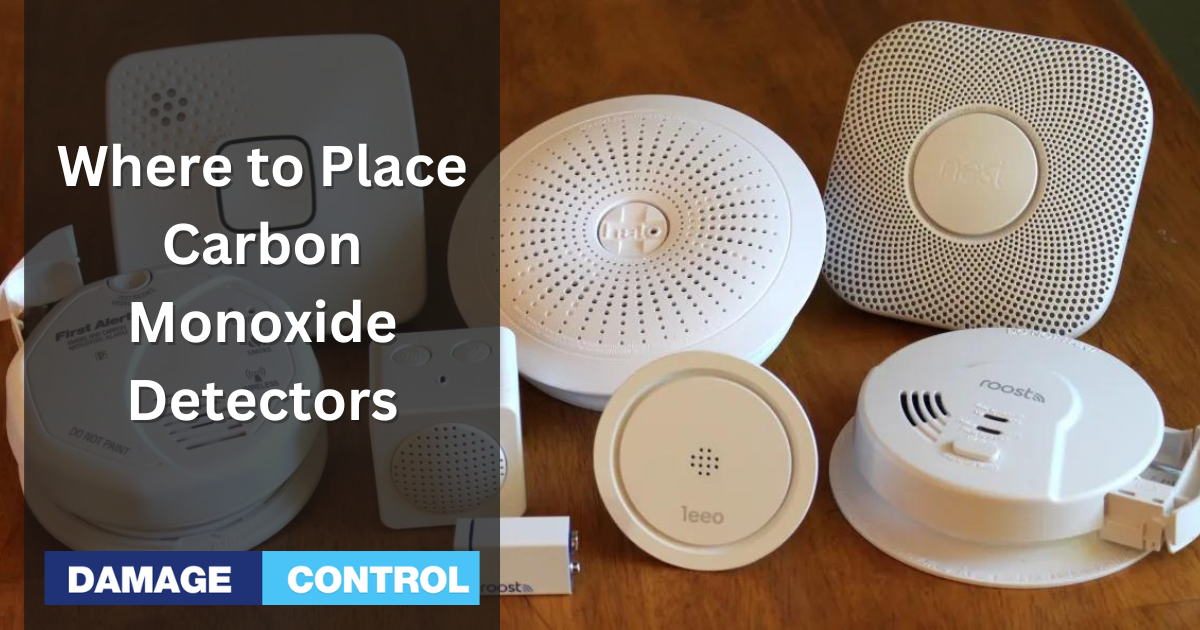When it comes to home safety, ensuring optimal placement of carbon monoxide (CO) detectors is paramount. Carbon monoxide is a stealthy hazard; you can't see it or smell it. That's why proper positioning of these life-saving devices is crucial. Here's what you need to know:
Every Level of Your Home
To start, each level of your home should have at least one CO detector. Be it the basement or the top floor, every story needs its sentinel.
Near Sleeping Areas
Place detectors near bedrooms and other sleeping areas. A silent threat, CO doesn't care if you're asleep. In fact, that's when it's most dangerous. The detectors should be close enough to rouse you if they go off at night.
Above Fuel-Burning Appliances
Carbon monoxide comes from fuel-burning appliances. These can include things like:
- Stoves
- Fireplaces
- Furnaces
- Water heaters
However, keep detectors at least 15 feet away from these sources to avoid false alarms.
Away from Humid Areas
Avoid areas with high humidity, such as bathrooms or laundry rooms. Moisture can damage the detectors and reduce their effectiveness.
Don't Forget Your Garage
Your garage needs a detector too. Cars and other vehicles can produce carbon monoxide, making it a potentially hazardous area.
Installing CO detectors properly might seem overwhelming. However, with these pointers in mind, you can create a safer environment in your home. Let's ensure safety by making smart decisions on where to place carbon monoxide detectors.
The Do's and Don'ts of CO Detector Placement
Once you know where to put detectors, you need to know how to install them. Here's a short list of do's and don'ts:
Do's:
- Do install one on every level.
- Do place them near sleeping areas.
- Do put one in your garage.
Don'ts:
- Don't place them too close to fuel-burning appliances.
- Don't install in areas with high humidity.
These simple tips can make all the difference. Install your detectors correctly and keep your home safe from carbon monoxide.
Safety is never a place for compromise. Make sure you're covered on every level, in every room, and remember – your garage counts too. Let's keep safety in check by placing CO detectors where they can do their job best.
Regular Maintenance: An Essential Step
After the detectors are in place, regular maintenance becomes the key to ensuring their optimal functioning. Here's how to maintain your CO detectors:
Test Them Regularly
Make it a habit to test your detectors once a month. It's as simple as pressing a button and waiting for the beep that confirms they're in working order.
Replace Batteries Annually
Don't wait for the low-battery warning. A good rule of thumb is to replace batteries every year. It's a small task for such a big payoff: your peace of mind.
Renew Detectors Every 5-7 Years
CO detectors don't last forever. Even if they seem fine, their sensors deteriorate over time. Typically, you should replace your detectors every 5-7 years.
Safety is not a one-time task. It requires consistent effort. Keep your detectors in top shape with regular testing, timely battery replacements, and renewing old units.
Summing It Up
Ensuring the correct placement of carbon monoxide detectors can quite literally be a lifesaver. Each level of your home, sleeping areas, and even the garage need detectors. But, avoid places with high humidity or too close to fuel-burning appliances. Regular maintenance of these devices completes the safety loop.
With these measures in place, you can rest easier, knowing that you've taken significant steps to protect your household from the silent but deadly threat of carbon monoxide. So, let's prioritize safety and give CO detectors the attention and location they deserve.

